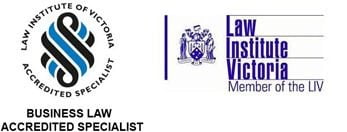Restrictive Covenants limit how land can be used, benefiting neighbouring properties by maintaining standards like building materials or limiting the number of dwellings. Their aim is to protect neighbouring property values and characteristics but can be restrictive for landowners. In this article we explore how you can apply to either remove or modify a restrictive covenant burdening your land.
BENEFIT AND BURDEN
Sections 78 and 79 of the Property Law Act 1958 (Vic) effectively codify common law principles regarding the annexation of benefits and burdens of covenants which “run with the land”.
Section 78 – Benefit of Covenant
Section 78 provides that the benefit of a covenant, which unless expressly stated, passes with the land to any subsequent owner carrying with it the originally intended benefits of the covenant ensuring continuity in the protection of the land’s value or enjoyment.
Section 79 – Burden of Covenant
Section 79 provides that the burden of a covenant, unless expressly stated, passes with the land to any subsequent owner ensuring that restrictions or obligations imposed by the covenant remain enforceable.
MODIFY OR REMOVE
Planning permit applications are the primary method for addressing individual restrictive covenants, but are far less likely to succeed, especially if objections are significant. This leaves the Supreme Court of Victoria as the preferred venue in which to apply to Remove and/or Modify a Restrictive Covenant.
Legal advice from experienced Property and Planning lawyers is crucial due to the complexity involved in navigating several legal processes in Victoria.
How to Remove or Modify Restrictive Covenants in Victoria
- Restrictive Covenants may be Removed or Modified by a number of methods:
-
- Consent from Beneficiary: Obtain consent directly from the party benefiting from the covenant, though this is not always feasible.
- Planning Scheme Amendment: Apply to amend the local planning scheme under Part 3 of the Planning and Environment Act 1987. This involves consultation and can be complex, typically used for larger changes affecting areas rather than individual properties.
- Planning Permit Application: Apply for a planning permit to vary or remove the covenant. This is the most common method for individual properties, but objections can lead to refusals.
- Supreme Court Application: Seek discharge or modification of the covenant through an application to the Supreme Court of Victoria under section 84 of the Property Law Act (1958). This process is costly and requires legal advice but it typically used for individual properties.
- Appeals and Considerations:
-
- If a planning permit application is refused, you can appeal to the Victorian Civil and Administrative Tribunal. The VCAT will assess any detriment to beneficiaries of the covenant.
In the case of Randell v Uhl [2019] VSC 668, Associate Justice Derham clarified the requirements for a party to be bound by the terms of a building scheme in Victoria. In this case, if a building scheme is established but through usual inspection of the certificate of title or by reference to another accessible instrument or document in connection with the title it remains undiscoverable, then the burdened party will not be bound by the terms of the building scheme as notification of the scheme was not evident on the face of the title.
In the case of Willis v City of Casey [2022] VCAT 650, the Tribunal refused an application to remove a restrictive covenant despite the absence of objecting beneficiaries finding that [23] “This is not a matter that is dependent upon whether or not there are objections”. Therefore, the absence of objections should not encourage you to rest on your laurels as you are not guaranteed a lay down misère, as it were.
CONCLUSION
In summary, while it’s possible to remove or modify restrictive covenants in Victoria, it requires careful consideration of legal avenues and potential challenges. Each method has its own requirements and implications. We emphasise that it is critical to retain expert guidance throughout the process.
Contact Kennedy Guy
Our solicitors are able to assist with your Restrictive Covenant queries. Please contact us if you would like to know more via our ‘Enquire now’ button in the top right-hand corner or via (03) 9311 8511.

